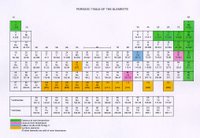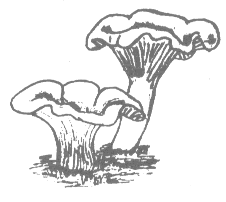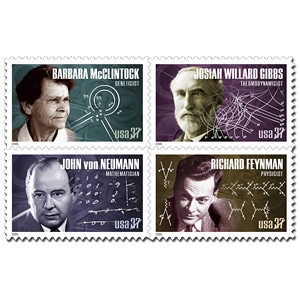Remarks as part of a panel presentation on women in science, prompted by Larry Summers' remarks on the paucity of women in science for a joint meeting of the Cosmopolitan Club and the Franklin Inn club in Philadelphia.I will confess to a guilty pleasure, I keep a blog. It's called the
Culture of Chemistry, and for the most part it is a gentle riff on popular culture through the eyes of a chemist. Last week I posted a short piece called "
The Hidden Women of Science" -- and overnight the number of readers quadrupled. The post was prompted by an
article in the Chronicle of Higher Education about the record number of women elected to the National Academy of Science this year and reads in part:
"The words "women in science" tend to bring up the image of Marie Curie, Dorothy Hodgkin or, in a peevish moment, Larry Summers. These are not the women in science I'm thinking about. It's the hidden women, the women behind the scenes that fascinate me. The truly invisible women of science are the wives of the scientists who make it possible for them to work 80+ hours per week and still play golf.
A recent look at Princeton's cadre of science faculty, which is reasonably representative, one might presume, of the larger cohort of top research universities, reveals that the majority of male faculty enjoy a stay at home spouse. None of the female science faculty are so blessed. So what? So, the guys with spouses who work at home have staff. Someone to coordinate the school activities, the after school activities, the errands, the house repairs (who stays home for the plumber, eh?), the grocery shopping, car repairs, cooking, cleaning.....
So when we think about women in science, we must realize that much of the top-ranked academic research enterprise depends very heaviliy on the unpaid [and unacknowledged] labor of women -- in science."
The post provoked various comments on my blog and the blogs of others, by both men and women. One male computer scientist frankly acknowledged that his wife's willingness to take on these tasks made it possible for him to spend the hours necessary; a male English professor notes that he does the same so that his wife can make partner in her law firm, and that reading my commentary he realized that he was a
"man of the law" in the same way; a woman computer scientist
wondered why (with respect to Harvard): "there isn't really even an awareness that they might need changing. It is still a case of 'how can we make you more like us?', rather than 'women, what do you need so that you can strike a balance?'"
I'd reframe Nandini Pandya's comment and ask, what do we - men and women both - need to be successful, productive and well-balanced scientists without recourse to the hidden women of science (or the missing men of law!).
A couple of years ago I gave a paper at a international conference. There had been an after-dinner talk - the first given by a woman at this meeting in its 30-year history. Afterward, a clump of chemists lingered by the elevators, dissecting the talk, when suddenly an older colleague blurted out that science was, he thought, "a grim life for a young woman." He went on to say that you could neither do enough science to be taken seriously, nor take adequate care of your children, so it is rather a lot of drudge work, without any chance of reward. I certainly had not found my life to be "grim" at all. I enjoyed what I did as a chemist and as a parent. I am a successful scientist - tenured, promoted, on a list of highly cited scientists - and had managed much of this while raising two young sons who seem to be turning out reasonably well. (My kids read about this in an essay published this month and my youngest was aghast that anyone would think that a scientist could not be a great Mom - who else has a mom that can help you
extract DNA in your own kitchen). Let's just say that my adversary's response, "Well, la-di-da for you!" did not exactly encourage further serious discourse on the issue. I hate to say it, but he does have a point: and one that is supported by research.
The
National Survey of Faculty, based at Penn State, compared men and women in the fields of chemistry and English, noting that in both fields at any rank, at any type of institution, women faculty are less likely then men to be married or in committed relationships. The average number of children per woman faculty member is also substantially lower - again regardless of discipline, rank, or type of institution. The survey's authors attribute this directly to "bias avoidance behaviors" in women. Research has shown that time = papers, i.e. productivity (as measured by number of publicationss) is strongly correlated to the number of hours invested in research [M.R. Nakhaie "Gender differences in publication among university professors in Canada" Canadia Rev of Sociology and Anthropology 39 (2): 151-179 May 2002].
Restricting the hours restricts the output, and research shows that what we think is true - is in fact true: restricting the output reduces the chances for promotion. [J.S. Long, P.D. Allison, R. McGinnis, "Rank Advancement In Academic Careers - Sex-Differences And The Effects Of Productivity"] Women know that having a family will cost them, this is the "bias advoidance", both in terms of the hours of domestic work that their male peers not have to invest (men, on average, contribute 10 hours a week to a household, and adding children to the mix does not increase their contribution), and perhaps also in their reputation for academic seriousness. It is a Faustian bargain that women must strike—sacrifice your immortality for scholarly heft.
Scholarly heft is hard to quantify, and we often consider hours worked and papers published as the measure of the quality of the science. Hence Summer's comments that women aren't able or perhaps willing to work the 80+ hours needed. Are they needed? Well, certainly the research suggests they are needed to produce lots of papers. The "
productivity puzzle" was proposed in an essay by Scott Long in the early 1990s: why aren't women scientists as productive as men? Recent research has shown that when you account for factors such as prestige of institution, marital status and effort invested (read time) there isn't a puzzle, the differences fade. Which suggests that inherently, women can be successful in science in the traditional way (publish lots of papers), as long as they have the time to invest.
The flip side of the productivity puzzle was the "
impact enigma" - women's papers (in biochemistry, the field studied) are cited much more frequently. Why? Even given that the cohort of women studied were in more "marginal" positions, their research appears to be more valued by peers than men's. Is it that each paper must count for more, if you get one chocolate bar a year, it had better be Scharffen-Berger and not Hershey? The jury remains out on the reasons.
President Summers wanted to provoke a conversation, so I will respond in kind and ask two questions:
First, is a model in which depends on "hidden" contributions of women, sustainable in a cultural moment in which women are getting more of the bachelor's degrees than men? Is it fair to those, single parents, singles and women, who do not have access to the same support systems? And, in the end, is this system the most productive for society? My mother-in-law, an X-ray crystallographer, was married to another scientist, and faced productivity issues (a postcard found in her files congratulates her on a productive sabbatical, two sons and a new crystal structure solved).
Mildred Dresselhaus, a highly productive and well-regarded materials scientist, at MIT is married to another scientist. If we took one of the two of the pair out of play in either of these partnerships, are we losing more than we are now (since presumably neither partner is as productive as they might be if each had a support staff)? Can we afford to lose 1/2 the pair, when we might have almost two? Certainly the answer to the last is no! To put it more provocatively, would some of Harvard's fifty million dollars be better spent creating a concierge service for faculty, than for more panel discussions?
Second, to what extent do we confuse quantity of publication with quality of work? Is the solution to the "impact enigma" to consider quantitatively the contribution of a scholar's work to the culture at large? If we made the shift to consider impact rather than sheer mass of publication, perhaps then the need for the heavy investment of hours would fade, the hidden women of science (and men of law) could go on to other things and the productivity puzzle would be solved as well!
Notes
- Nandini Pandya has a wonderful essay on these issues being published this week. See her blog at Progressive Indian-American Woman
- Christiane Nusslein-Volhard, who won the Nobel prize in Medicine in 1995, is well aware of this issue and is using her prize money to fund household help and childcare for women scientists in Germany. See Lisa Belkin in the NY Times 6/5/2005: "What a Working Woman Needs: A Wife". (Dr. Anna Meadows of CHOP pointed me to this article.)
- Some of the material in here comes from an essay I wrote entitled "Elemental MoThEr" collected in Parenting and Professing: Balancing Family Work with an Academic Career (edited by Rachel Hile Bassett, Vanderbilt University Press, 2005) and published this month. Another short excerpt is posted here.





























 appears in Laplace's Treatise on Celestial Mechanics, however, it was not original to Laplace, having been known for almost a half century.
appears in Laplace's Treatise on Celestial Mechanics, however, it was not original to Laplace, having been known for almost a half century.  . I presume the symbol for the Laplacian in 5-D would involve a pentagon?
. I presume the symbol for the Laplacian in 5-D would involve a pentagon?
